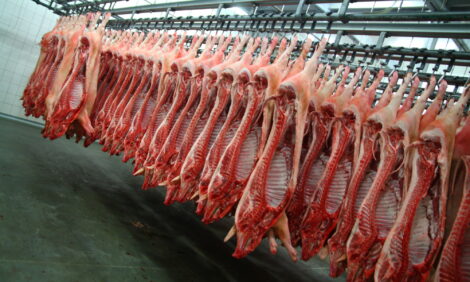



Growth performance of nursery pigs fed corn diets
By M.H. Whitney and G.C. Shurson, University of Minnesota - Two trials were conducted to determine the effects of including increasing levels of corn distiller’s dried grains with solubles (DDGS) in Phase II and Phase III diets for earlyweaned pigs on growth performance to determine a recommended maximum DDGS inclusion rate.
A high quality DDGS source, produced by a modern MN ethanol plant, was used. Ninety-six crossbred pigs (BW = 6.18 ± 0.14 kg) were blocked by gender and ancestry, and blocks were randomly assigned to one of six dietary treatments (4 pigs/pen, 4 pens/treatment) in each trial.
Pigs in Trial 1 were slightly older (19.0 vs. 16.9 d of age) and heavier (7.10 vs. 5.26 kg) at the beginning of the trial compared to pigs used in Trial 2. Dietary treatments consisted of including 0, 5, 10, 15, 20, or 25% DDGS in typical Phase II and Phase III diets in a 3-phase nursery feeding program. All pigs were fed a typical Phase I commercial pelleted diet for the first 4 d post-weaning.
Pigs were subsequently fed their respective Phase 2 experimental diets for 14 d, followed by their respective Phase 3 experimental diets for an additional 21 d feeding period. Experimental diets were formulated to contain equivalent apparent ileal digestible lys (1.35 and 1.15%) and met + cys (0.80 and 0.65%), ME (3340 and 3390 kcal/kg), calcium (0.95 and 0.80%), and total phosphorus (0.80 and 0.70%) within Phase 2 and 3, respectively.
Overall ADG, final BW, and G/F were similar regardless of dietary DDGS level in both trials (P > 0.10). In Trial 1, feed intake was unaffected by dietary level of DDGS (P > 0.10). However, in Trial 2, increasing levels of DDGS linearly reduced average daily feed intake (P < .05) during Phase II, resulting in a slight overall depression in voluntary feed intake (P < .10) for the entire length of the trial.
These results suggest that using high quality DDGS, and formulating diets using the University of Minnesota apparent amino acid digestibility values for DDGS, provides satisfactory growth performance when included at rates up to 25% in Phase III nursery diets.
It appears that feeding DDGS at levels up to 25% of the diet may also be satisfactory in Phase II for pigs weaned at 19 d of age and weighing > 7 kg, but initial feed intake may be depressed during Phase II when DDGS is fed to pigs weaned at younger ages (17 d or less).
Source: University of Minnesota - March 2003








